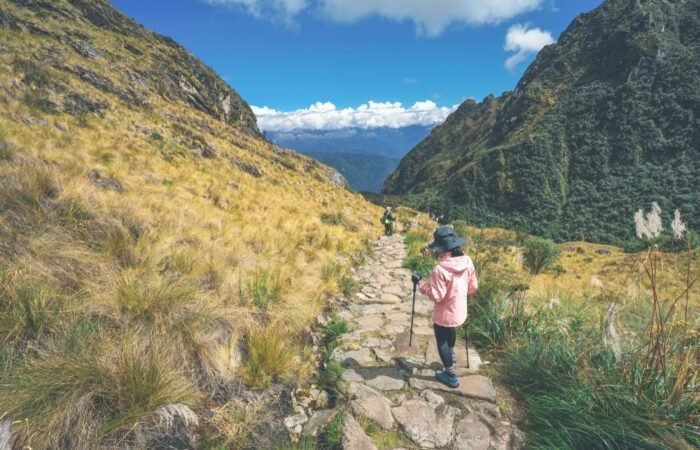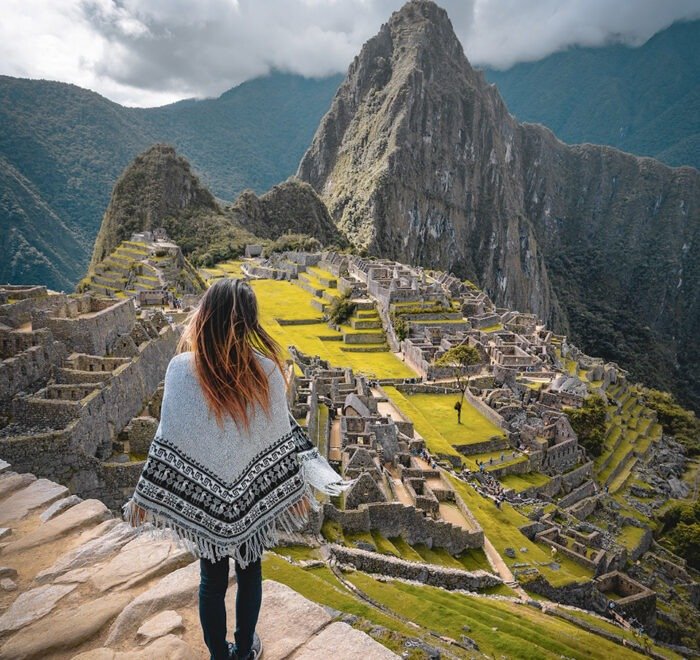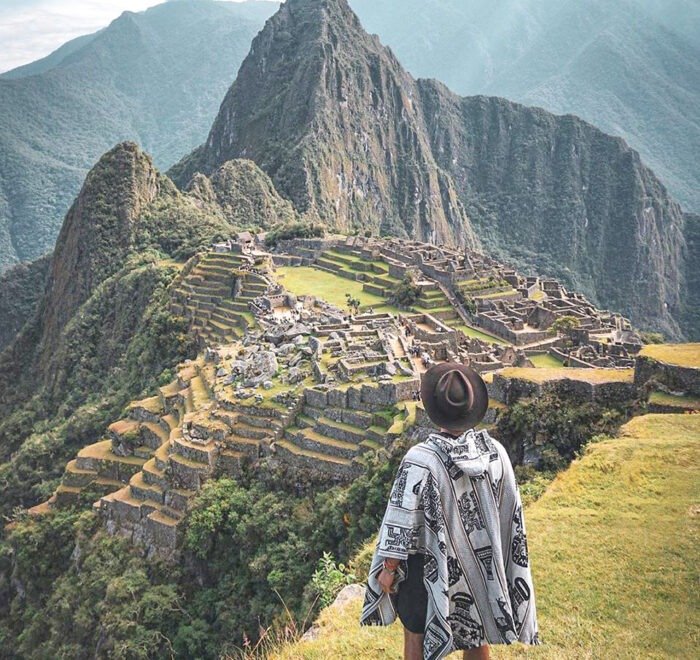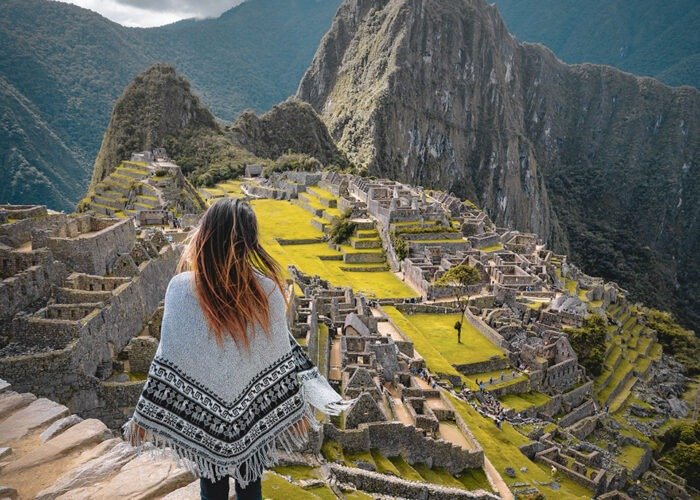


Only a few places in the world possess the kind of natural beauty and historic charisma that can capture the hearts and minds of visitors in an instant. Machu Picchu is one of them. Morning or afternoon, rain or shine, crowded or not – the sight of the stone temples and endless terraces set amid green-clad granite mountains never disappoints.
Forgotten after the fall of the Inca Empire and rediscovered 400 years later, Machu Picchu remains shrouded in mystery. Some questions may never be answered, but the former Inca city remains as irrefutable evidence of their highly advanced stonemasonry.

Only a few places in the world possess the kind of natural beauty and historic charisma that can capture the hearts and minds of visitors in an instant. Machu Picchu is one of them. Morning or afternoon, rain or shine, crowded or not – the sight of the stone temples and endless terraces set amid green-clad granite mountains never disappoints.
Forgotten after the fall of the Inca Empire and rediscovered 400 years later, Machu Picchu remains shrouded in mystery. Some questions may never be answered, but the former Inca city remains as irrefutable evidence of their highly advanced stonemasonry.

Machu Picchu is one of the New 7 Wonders of the World. It was built during the rise of the Inca Empire, and it’s considered the most visually striking prehispanic structure of the continent. Currently, this ancient sanctuary receives over 1.5 million visitors per year, making it the most in-demand travel destination in South America.
It is located in the heart of the Peruvian cloud forest within the region of Cusco. The famous Inca Citadel is located on top of a mountain over 2,400 meters above sea level.
Machu Picchu is located in the limit of the Peruvian high jungle and the Andes, at 2,430 meters above sea level. The temperatures in this region range between 12°C and 24°C, it has predominant warm and humid weather throughout the day and it’s colder during the night. The climate condition in Machu Picchu is characterized by two primary seasons:
It is worth mentioning that the weather conditions in this region may change drastically. Therefore, we encourage you to know everything about it and prepare the perfect Machu Picchu packing list before venturing out to this wonder.
To avoid human impact and contamination in this historical sanctuary, the Peruvian government has limited the access to visits only. Unfortunately, it is not possible to spend the night on the archeological site. However, there are some hike options as the Inca Trail and Salkantay Trek that offer overnight camp in the Peruvian wilderness.
Yes, one day is enough to visit the ancient citadel of Machu Picchu. However, the visit has been limited to 4 hours per passenger, and tickets are issued with a certain entrance time. Also, if you’re doing the additional treks, your permanence may be extended from 2 to 3 hours.
No, Machu Picchu is open every day of the year, even on holidays. However, if you’re planning to take the Inca Trail to Machu Picchu, keep in mind that the trail is closed in February due maintenance.
Those are the surrounding mountains to the Inca Citadel. Huayna Picchu is located at 2,720 meters above sea level and offers an outstanding view to the archaeological site as well as several Inca ruins along the trail.
The Machu Picchu Mountain is located at 3,082 meters above sea level, and serves as another viewpoint to the famous historical sanctuary. However, the trek to its summit is significantly less challenging than the Huayna Picchu mountain.
To trek either of these mounts, you must purchase an additional entrance ticket well in advance. For more information, please contact your travel agent.
The only toilets are located in the main entrance of the Machu Picchu citadel. There are no toilets within the archeological complex.
No, the Inca citadel’s circuit isn’t challenging at all. It is not necessary to have a high fitness level to explore the sanctuary.
To enter Machu Picchu, you’ll need to arrive for the stipulated entrance time in your ticket and show your passport.
Yes, it is highly recommended to purchase the ticket to Machu Picchu in advance, especially if you’re traveling during the high tourist season. For more information contact your travel agent.
No, there is no age limit for the entrance to the historical sanctuary.
Yes, a companion of a guide is mandatory for the visit to Machu Picchu.
Yes, to optimize the experience inside the archeological site, the Peruvian government has implemented the following measures:
There are different ways to get to Machu Picchu. Depending on the time you may have and the experience you’re looking for, you can decide either going on a fabulous train ride or venturing out through an authentic trail to the famous Inca Citadel.
To learn more about how to get to Machu Picchu, please read our travel guide and don’t miss anything during your trip through Peru!
Yes, you can walk from the so-called Machu Picchu Town to the Inca citadel, it takes about 1 hour and 45 minutes to get there.
Currently, it is not possible to buy the bus ticket to Machu Picchu in Advance. However, you can easily purchase it once in Aguas Calientes town.
There are different train stations, but this will depend on the departure point of the train ticket you’ve purchased. Here we have listed the train stations for Machu Picchu.
There are different types of trains and routes to reach the famous Machu Picchu town. These are the most in-demand options:
Yes, we highly recommend purchasing the train ticket to Aguas Calientes in Advance. For more information, please contact your travel agent.
Unfortunately, Peru Rail (the railway company) does not allow passengers to choose seats on any of their different types of train. The distribution of these is done automatically by the company’s system.
Bags that weigh more than 5kg are not allowed on the train or in the Archeological Site of Machu Picchu. Therefore, you must leave your large luggage in the storage service of your accommodation.
For your trip to Machu Picchu, we highly recommend you to carry a light backpack with just the essentials for your comfort.
Also known as Qhapaq Ñan, is a network of trails that connected the whole Tahuantinsuyo Empire. It used to have a length of 23,000 km and passed by Colombia, Brazil, Ecuador, Peru, Chile, and Argentina.
Nowadays, it is one of the most sought after treks to Machu Picchu. The Classic Inca Trail takes you through several archeological sites and the exuberant nature of the cloud forest. For more information, please check our travel guide
To reduce human impact on this historical trail, the Peruvian government has limited the access to 500 people per day, including hikers, coorks, porters, and guides. Therefore, if you’re up to this adventure, we highly recommend you booking your trip at least 6 months in advance. It is worth mentioning that the Inca Trail is closed in February due maintenance.
The Classic Inca Trail has a length of 43 kilometers and it’s considered a moderate to challenging trek. However, a high physical condition is not required to complete this trek. To learn more about how to prepare for the Inca Trail please check this informative guide.
The Salkantay Trek is the best alternative to the famous Inca Trail. This extraneous path takes you through the most remote locations of the Peruvian Andes and to altitudes over the 4,600 meters above sea level to appreciate the towering Salkantay snow-capped mountain. Find out more about this adventure here
If you’re up to this adventure, you must do your research right since there are many companies that offer this tour. But, one thing is certain, going cheaper isn’t always the best option. Remember you’ll get the service you’ve paid for, no more, no less. Therefore, if you wish more information about reliable tour operators for the Salkantay Trek, please contact our team.
The Salkantay trail is 74 km long and it’s considered a moderate to challenging trek. Therefore, we recommend you getting used to the altitude and walking long distances before committing to this physically demanding trek. Keep in mind that the highest point of the Salkantay Trek is located at 4,630 meters above sea level.